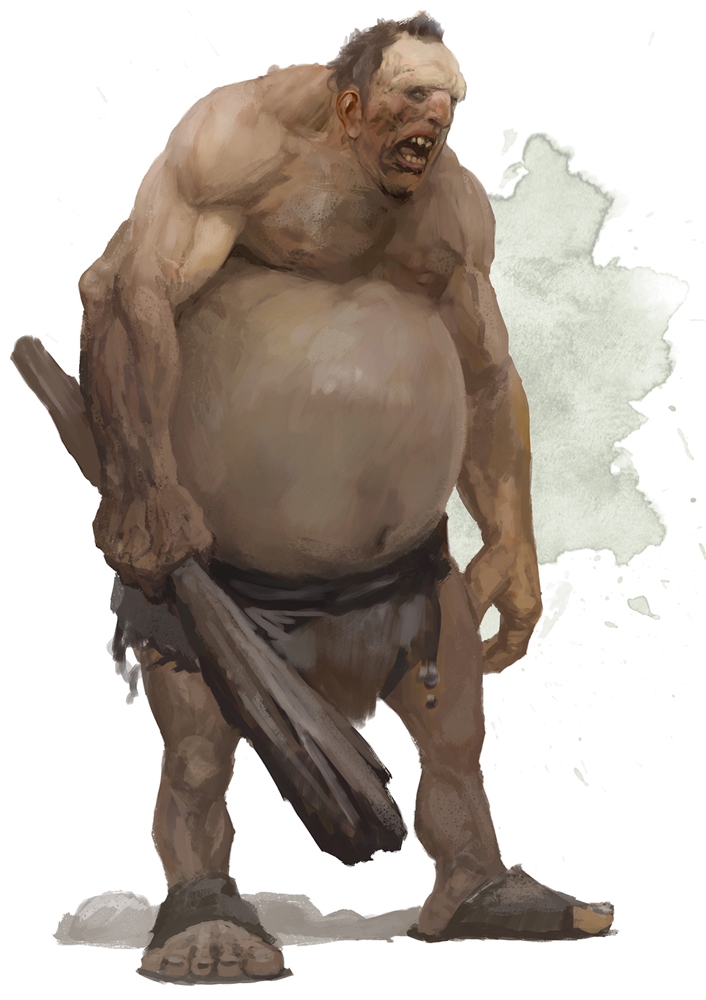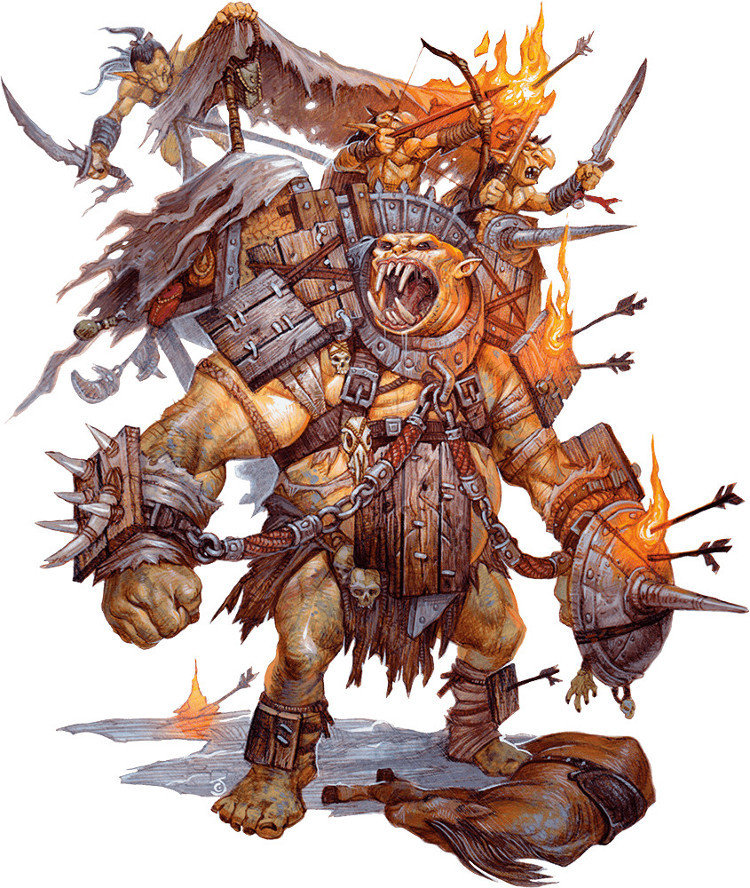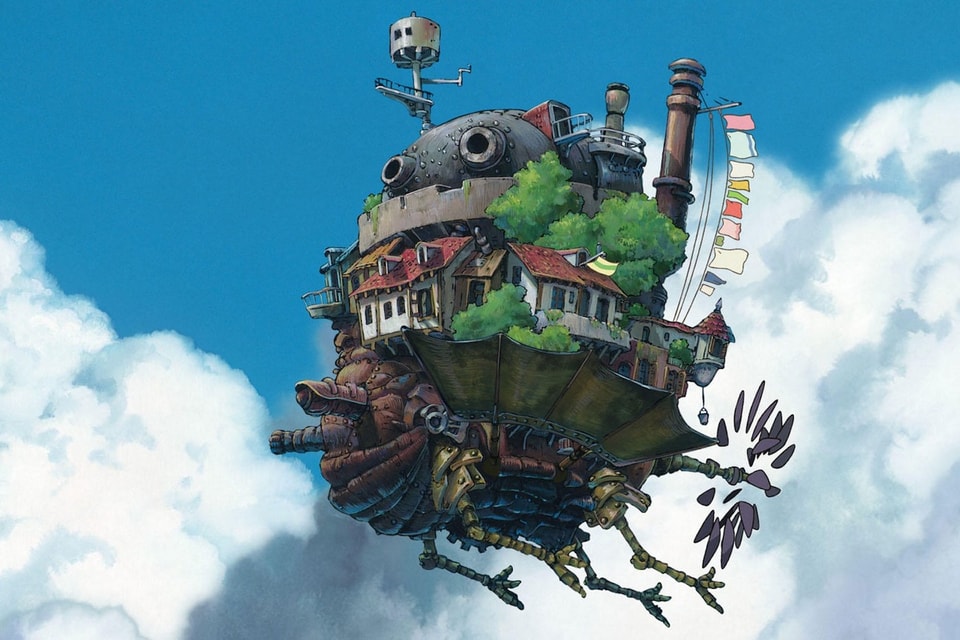Last Updated on January 22, 2023
The ground trembles, the trees and mountains shake with every footfall, and a long, dark shadow falls over the land. Ring the warning bells, man the catapults, and pray to the gods that the walls hold fast… The giants are coming.
Giants are a type of monster in Dungeons & Dragons 5e that encompasses over a dozen different varieties of massive, humanoid creatures.
Giants range in both size and lethality from dimwitted, hulking ogres all the way up to the mighty storm giants, which stand almost thirty feet tall, make their homes atop the highest mountains or at the bottom of the sea, read the future in the stars, and can hurl lightning from their bare hands when angered.
In this article, we’re going to break down the basics of giant culture and give a rundown on specific kinds of giant. We’re also going to go over some of the more famous modules featuring giants: Storm King’s Thunder and Against the Giants.
Long Shadows — An Intro to Giant Culture
The giants — and once it was fair to refer to them as such — are a culture living in the post-apocalyptic ruins of a much grander age.
Long ago, before the rise of the “little people” (like dwarves, orcs, and worst of all humans):
“Ancient empires once cast tall shadows over a world that quaked beneath the giants’ feet. In those lost days, these great creatures were dragon slayers, dreamers, crafters, and kings, but their kind fell from glory long ago.”
The giants’ mighty empire — Ostoria — is long lost to history, its cyclopean architecture eroded by wind and rain and its ancient arts forgotten to such a degree that most people only ever think of giants as a race of mindless, carnivorous brutes.
However, while it’s true that the smaller varieties of giant (like the hill giant, standing at a meager 16 feet tall, or ogres) dwell in filth, steal livestock, and raze villages to the ground on a whim, they are by no means representative of all giantkind.
From the proud storm giants to the wise and contemplative cloud giants, giant culture is rich, diverse, and vibrant with art, culture, and philosophy.
Though they might be very different from one another, all of the main giant races — the cloud, fire, frost, hill, stone, and storm giants — share a common thread of history, religion, and culture.
They view one another as kindred, keeping any inherent animosity over territory and ambition to a minimum, even though they prefer isolation to cohabitation.
Caste in Stone: The Ordning
All giants, from the lowliest ogre to the Storm King himself, adhere to a rigid caste system called the Ordning.
This system is based on social class and is highly organized, ranking each individual giant among the rest of its species. Giants wield great authority over those who rank beneath them and show unflinching deference to those above.
No two giants are equal, so any giants who come together must compare their respective places in the Ordning to determine who is superior.
The different types of giants form the different castes of the Ordning with the storm giants at the top and ogres at the bottom.
Then, position within a caste is determined differently depending on the things those giants value, and giants can advance within their own caste by challenging a superior.
It’s easy to see the giants as a profoundly sad group of creatures with ogres and hill giants forced to claw out brutal, dangerous lives on the fringes of humanoid civilizations, their empires long since torn down by “lesser” species.
However, a good number of giants — especially the most powerful types — choose to live lives of silent, philosophical contemplation or to spend their days creating art or musing on philosophical matters.
The True Giants
While there are more creatures that fall into the category of “giant” (we’ll get to them in a moment), there are six cultures that are agreed upon to be the “main types” of giant, ranging in size from the Hill Giant all the way up to the mighty Storm Giant.
Hill Giants
CR: 5
Dimwitted, brutish, and selfish, hill giants are the lowest in the order of the “true giants.” They dwell on the fringes of humanoid lands, constantly raiding and ambushing anything they think they can kill in a ceaseless search for food.
Hill giants almost exclusively use size to measure relative strength.
Anything smaller than them — whether that means a young dragon, an archmage, or a sheep — is food. Anything bigger is to be avoided or grudgingly obeyed.
Despite being the weakest of the giants, hill giants are still terrifyingly strong with a massive pool of hit points and the ability to crush their enemies with massive boulders or trees.

Stone Giant
CR: 7
Reclusive, contemplative artists, seers, and hermits in the deep darkness of mountain caves, stone giants are by and large a peaceful group of creatures — provided they’re not disturbed, that is.
They dwell underground, patiently carving elaborate sculptures or making colorful paintings far beneath the earth.
Stone giants inhabit a strange world where all non-stone is considered to be unreal, and the world outside of their mountain caves is a place of ethereal dreams and lessened reality.
Stone giants value artistry and, surprisingly, athletic grace when determining the place within the ordning.

Frost Giant
CR: 8
Beings of ice and snow with icy blue skin and manes of wild, white hair, frost giants are fierce warriors who live for both battle and the hunt.
They respect only the strong and survive by raiding and pillaging anyone weaker than themselves, including other frost giants.
Though first giants don’t value artistry or trade crafts in their society, they make their clothing from the skins and bones of beasts and carve bone or ivory into jewelry and the handles of weapons and tools, not to mention repurpose the armor and weapons of smaller races into their own wargear.
The strongest frost giant — the one with the biggest muscles, the most battle scars, and the most impressive trophies — is the one who takes his place at the top of the ordning where all eyes watch it, hungry for a chance to trade places.
Fire Giant
CR: 9
Brutal warriors and masterful smiths, the black-skinned, red-eyed fire giants build their fortresses in or beside volcanoes (sometimes on the elemental plane of fire itself), where the immense heat fuels their forges.
Smiths and metalworkers occupy positions of high status in the fire giant ordning as do those with a talent for warfare as well as artistry and craftsmanship.
Despite their size and brutish appearance, fire giants are master tacticians, and underestimating them is a fatal mistake.
Rather than raze conquered kingdoms to the ground, however, fire giants often install themselves as feudal lords with humanoid serfs forced to work the farms and fields on the outskirts of fire giant halls and fortresses, raising livestock and harvesting fields whose bounty is almost entirely tithed to the fire giant kings.
Cloud Giant
CR: 9
High and mighty, these affluent giants are second only to the mighty storm giants in the ordning (even though fire giants are individually more dangerous) and take great pleasure in placing themselves at the pinnacle of giant society.
Cloud giants order other types of giant around, sending out hill giants and frost giants to raid other lands for treasure and art or having fire giants and stone giants create beautiful things for them to enjoy.
During the days of the giant empire, cloud giant mages made mighty castles from solid clouds, but while a few of these magical places still remain, most cloud giants now make do with castles built upon high mountaintops.
Storm Giant
CR: 13
Distant philosophers, kings and queens of giant kind, and far removed from the concerns of most other mortal cultures, the Storm Giants sit at the pinnacle of giant society.
They are easily the largest (standing around 26 feet tall on average) and most powerful of all the giants, but they are also the most cerebral and obsessed with their long-lost past.
Storm giants don’t compete for status in the ordning but live out their long, lonely lives in contemplative hermitage, watching the night sky or reading the deepest ocean currents for hidden signs, symbols, and omens that might give them access to some deeper mystery.
Other Giants
The six types of giant mentioned above are all strict adherents to the ordning and, even though many of them prefer solitary existences, are all still part of the fabric of what remains of giant society.
While ogres, ettins, trolls, and other giant-type creatures may technically fall into the giant class, they don’t share the same cultural background with their hill, stone, frost, fire, cloud, and storm kin.
Ogre
CR: 2
Technically the smallest and weakest (definitely the stupidest) of all giant kind, your average ogre is still more than capable of tearing a human limb from limb or devouring a halfling in a few quick bites.
These massive brutes often find common cause with smaller chaotic species like goblins, who give them food and gold in exchange for being their muscle.
Some goblins even ride ogres into battle, using them as murderous, mobile weapons platforms.

Ettin
CR: 4
Foul-smelling, two-headed creatures, ettins appear to exist at some unhappy medium somewhere between a giant, a demon, and an orc.
The two-headed monstrosities are thought to be the ancient result of orcs who desecrated the temple of domogorgon.
Each ettin’s head has its own brain, personality, opinions, quirks, and desires. They also have their own names, which are usually combined to make the overall ettin’s name.
Raised together since birth, ettin heads often bicker and bully one another but will happily put their differences aside to kill and eat intruders.
Ettins are a great source of slightly goofy (but nevertheless terrifying) roleplaying encounters, especially for low-level players.
Troll
CR: 5
Cruel, chaotic, green-skinned creatures that relish the chance to devour a lost traveler or steal a cow from a farm, trolls are one of the more unique members of the giant family.
These creatures, in addition to being big, tough, and fond of beating their enemies to death with clubs, have remarkably potent regenerative properties that only fire or acid can halt.
Some legends even tell of trolls regrowing their own heads or even extra arms and legs.
Cyclops
CR: 6
One-eyed, solitary giants that live simple, reclusive lives in the wilderness.
Cyclopses herd sheep and make simple craft goods to trade with other cyclopses but treat all humanoids (and even other giants) with outright hostility. They are fearsome fighters but very dumb.
Oni
CR: 7
Easily the most unique and interesting of the giants, Oni are a type of man-eating, shapeshifting, magic-wielding ogre that delights in sowing disharmony and terror so that it can secure itself a steady supply of humans to eat.
You can read our full guide to running an Oni adventure here
Fomorian
Nightmarish mutated giants, cursed by the lords and ladies of the feywild after an unsuccessful coup, the Fomorians dwell deep in the Underdark where all other species avoid them for fear of rumors that their curse might be contagious.

Against the Giants and Storm King’s Thunder
The two most famous giant-centric modules in D&D both follow the same loose structure that follows the different tiers of the ordning from lowly hill giants all the way up to the more powerful varieties.
Against the Giants (G1-2-3) was originally written by Gary Gygax for the first edition of D&D back in 1981 as a series of three adventures in which players are recruited to assault the steading of a hill giant chief in retaliation for a series of brutal raids on human lands.
At the steading, they encounter ambassadors from the nearby fire and frost giant kingdoms, and the subsequent two adventures deal with assaults against those lands.
Seriously, with the Sinister Secret of Saltmarsh (U1), which uses the same device to get you to Danger at Dunwater and The Final Enemy (U2 and U3, respectively) released the same year, I feel like monster factions in the D&D universe could have avoided a lot of hardship if they just stopped sending ambassadors to one another’s forts.
Considered to be a classic module, Against the Giants was reskinned for 5e as part of the extremely mixed bag that is Tales from the Yawning Portal.
Honestly, if this module sounds fun, I would avoid the updated version and just sort of feel out the original as you go. The art is better, and the whole thing feels like it actually has a soul.
Or, you could just run Storm King’s Thunder. This was basically the first moment in 5e’s history when the designers really hit their stride with adventure design.
It’s a sprawling (seriously, it’s a giant adventure — geddit?!) sandbox linking a series of massive set pieces that, much like Against the Giants, takes players from fighting ogres and hill giants in response to raids on human lands to much more dangerous varieties.
However, the adventure does a really great job of including a wider variety of giants and really injecting their different cultural characteristics into how they behave in the story.
The introduction of cloud giants as a gaggle of morally diverse, decadent gadabouts who fly around in their castles made of clouds (which they fill with all sorts of interesting monsters) lends their sequences a very “Alice in Wonderland meets Spirited Away” feeling.
Not to mention the players have a chance to seize control of a cloud giant’s flying castle, which I can’t see failing to create unimaginable amounts of excitement at the table.

Also, for a 5e module about giant slaying, Storm King’s Thunder doesn’t seem to want you to fight very many giants.
In a very, very smart piece of adventure design, this module really wants you to negotiate, bargain, plead, and generally talk to giants as much as possible rather than fighting them.
Lastly, the module does a very good job of both exploring the history of the giants’ war with dragons and the concept of the ordning — the upsetting of which turns out to be at the very heart of the adventure.
I played my first tabletop RPG (Pathfinder 1e, specifically) in college. I rocked up late to the first session with an unread rulebook and a human bard called Nick Jugger. It was a rocky start but I had a blast and now, the better part of a decade later, I play, write, and write about tabletop RPGs (mostly 5e, but also PBtA, Forged in the Dark and OSR) games for a living, which is wild.
